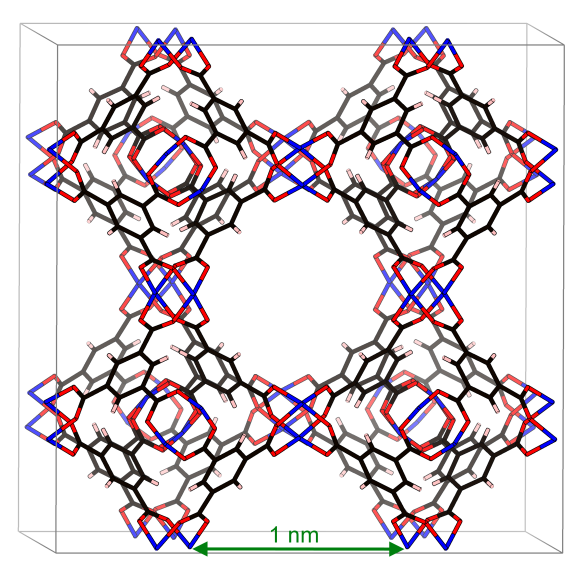Molecular structures
Posted on 03/01/2014

Sam Duyker
The structure of empty space – HKUST 1
What does it look like?

HKUST-1, named after the Hong Kong University of Science and Technology. Image generated using CrystalMaker: http://www.crystalmaker.com
What is it?
This is one unit cell of a porous metal-organic framework (MOF) material called HKUST-1, named after the Hong Kong University of Science and Technology. Notice the empty spaces in the structure. When you make this stuff in the lab, it is filled with water molecules, which can be removed by heating and vacuum to create a three-dimensional pore network. The material's huge internal surface area of over 1000 m2 per gram allows it to store gases such as hydrogen via adhesion of the 'guest' molecules onto the 'host' framework in a process called adsorption. The positively charged exposed copper sites lining the pores are particularly attractive places for the gas molecules to stick. Porous framework materials like HKUST-1 are currently receiving a lot of attention for numerous potential applications including fuel storage for hydrogen-powered cars, and capturing CO2 from fossil-fuelled power stations.
Where did the structure come from?
This material was first made, and its structure determined, by Chui et al. in 1999. MOFs are built up of a metallic components (in this case copper atoms, shown in blue), and organic linkers that interconnect them (benzenetricarboxylate ligands). There are 624 atoms in the unit cell, but the high symmetry cubic space group means that the structure can be defined using just 6 unique atoms.
Related articles
|
Chasing complex molecules in the stars – looking for L-Serine |
All of the symmetry – Pm-3: Sr3C60 |
Collagen: Triple strength |





